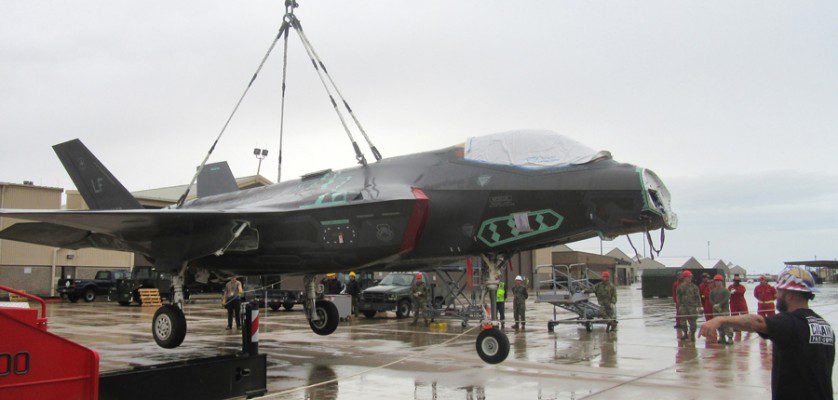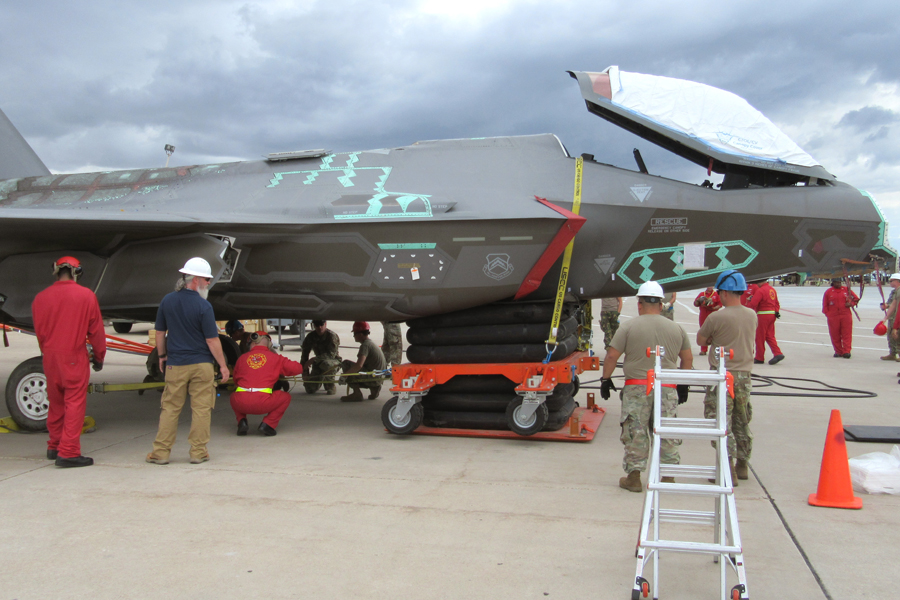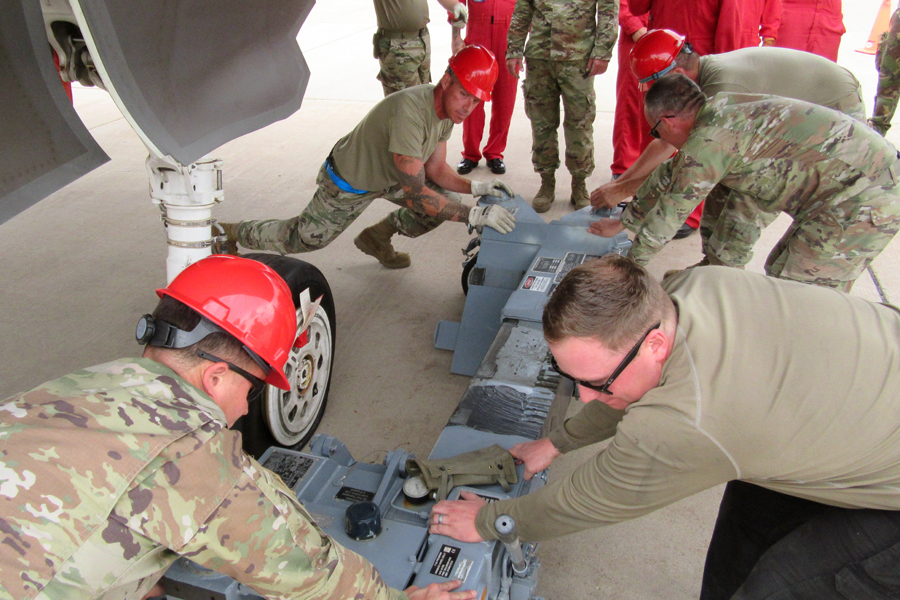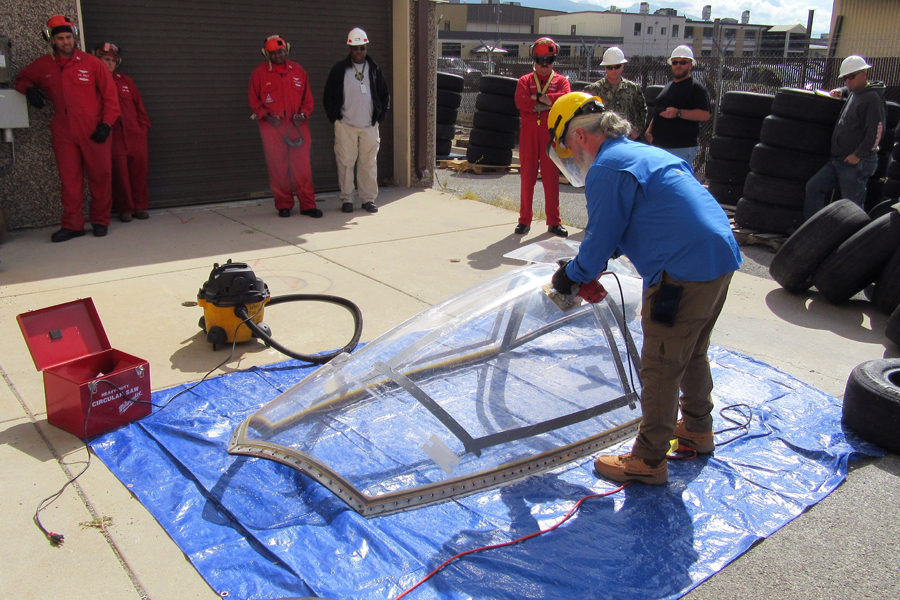by Todd Cromar | Hill AFB, Utah • October 13, 2022

The 388th Maintenance Group at Hill Air Force Base, Utah, recently hosted a first of its kind, F-35 crash recovery course using a newly-retired, now reassembled F-35A Lightning II.
The F-35 Joint Program Office’s five-day Crash Damaged or Disabled Aircraft Recovery course included 29 maintainers from across the F-35 program, sister services as well as F-35 partner nations. The training covered how to handle different scenarios safely and effectively, such as a collapsed nose gear, pilot extraction and aircraft hoisting.
“This training is invaluable for not only our U.S. military, but also for our partner countries who operate the F-35,” said Master Sgt. Andrew Wilkow, instructor and one of the course designers. “Unfortunately, occasional mishaps take place, which necessitates having personnel properly trained on recovery procedures and how to safely accomplish these tasks.”

Training for these “worst-case” types of scenarios takes an aircraft that can be roughed up a bit.
“It’s simply impossible to lift an operational jet with a crane, collapse the front landing gear and then set the nose of the aircraft on the ground without significant risk of damaging it,” Wilkow said. “Real-world, hands-on training can best be accomplished using a repurposed demonstration airframe.”
The 388th Maintenance Group along with the F-35 Joint Program Office rebuilt a retired F-35 that had been taken out of service in June.
The jet used was from another unit and suffered an engine fire during startup while temporarily assigned at Mountain Home AFB, Idaho, in 2016. After the incident, the aircraft was transported to Hill AFB for possible repair, where a decision was eventually made to condemn it because of the extensive damage and heavy repair costs.

Wilkow said keeping the aircraft at Hill AFB made sense because the 388th Fighter Wing and Reserve 419th Fighter Wing, which already fly and maintain the F-35A, and the Ogden Air Logistics Complex that performs all F-35 depot-level maintenance, are located here.
After the decision to turn the aircraft into a F-35 training platform for CDDAR was made, the 388th Maintenance Group was able to reassemble most of the airframe within three weeks with equipment, parts, and tooling help from the Joint Program Office and 309th Aircraft Maintenance Group with the Ogden ALC.

Students practice pilot extraction procedures on an aircraft canopy during a new Crash Damaged or Disabled Aircraft Recovery training course Sept. 13, 2022, at Hill Air Force Base, Utah. The F-35 Joint Program Office’s first CDDAR course included 29 maintainers from across the F-35 program, sister services as well as F-35 partner nations.
“The jet had been stored in pieces at the depot, so three days were spent auditing the parts to confirm everything was there before it was moved to a hangar where the airframe was rebuilt,” Wilkow said.
During this same period, he created the course syllabus and lesson plans for the F-35 JPO, relying on the course development experience he learned during his previous assignment as an instructor with the 372nd Training Squadron.
Wilkow credits everyone involved with the rebuild and for their overall project support, in particular the fighter generation squadrons that devoted significant personnel to putting the jet back together.
Officials said the initial CDDAR training course was successful and the F-35 JPO already has requests to attend future courses.
“Feedback from the individuals who attended the first course were extremely positive and appreciative that there is now a course that provides a hands-on opportunity for F-35 crash recovery,” said Dan Santos with the F-35 JPO. “This course will be extremely beneficial in preparing F-35 emergency responders to respond to a mishap.”


